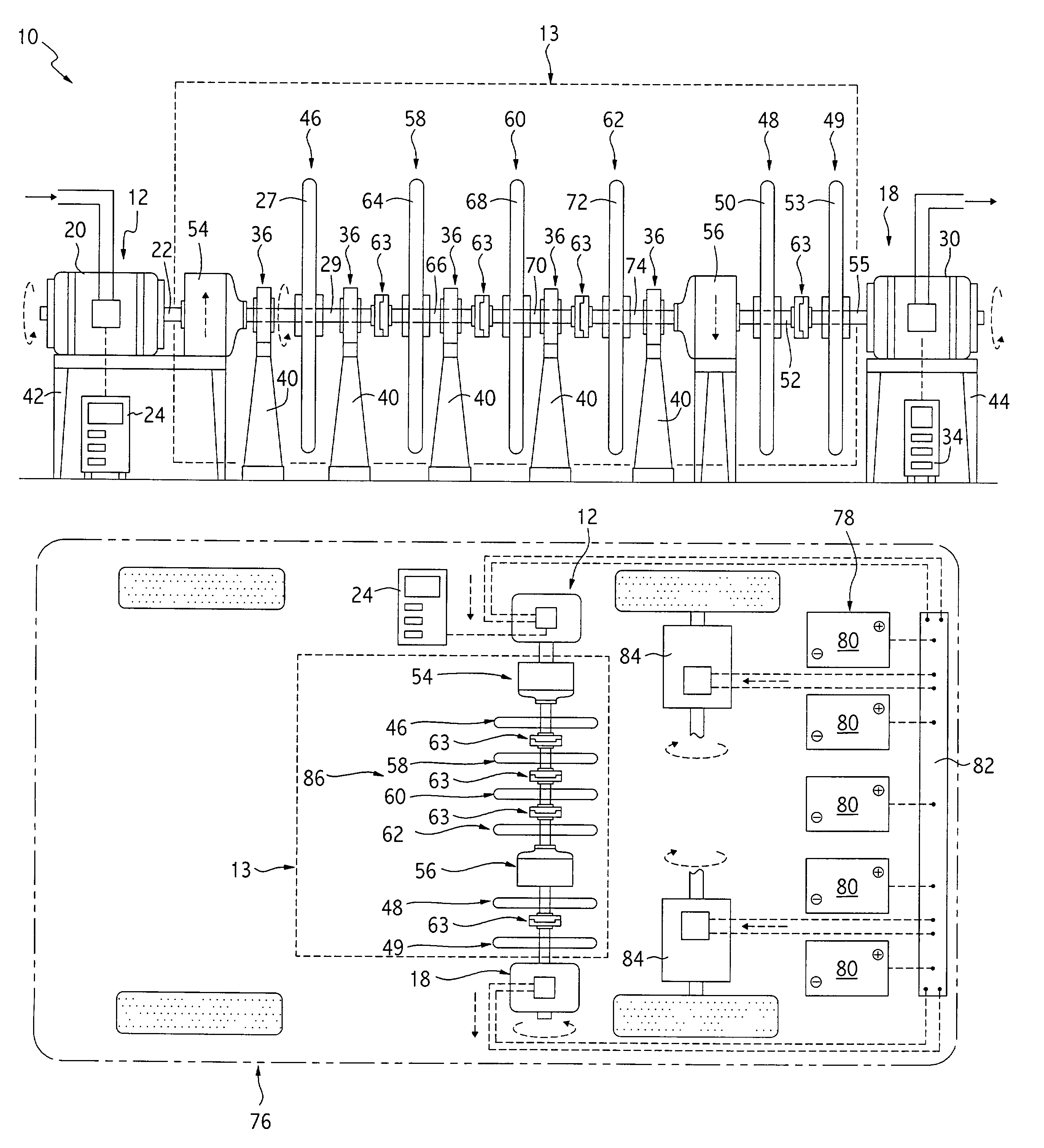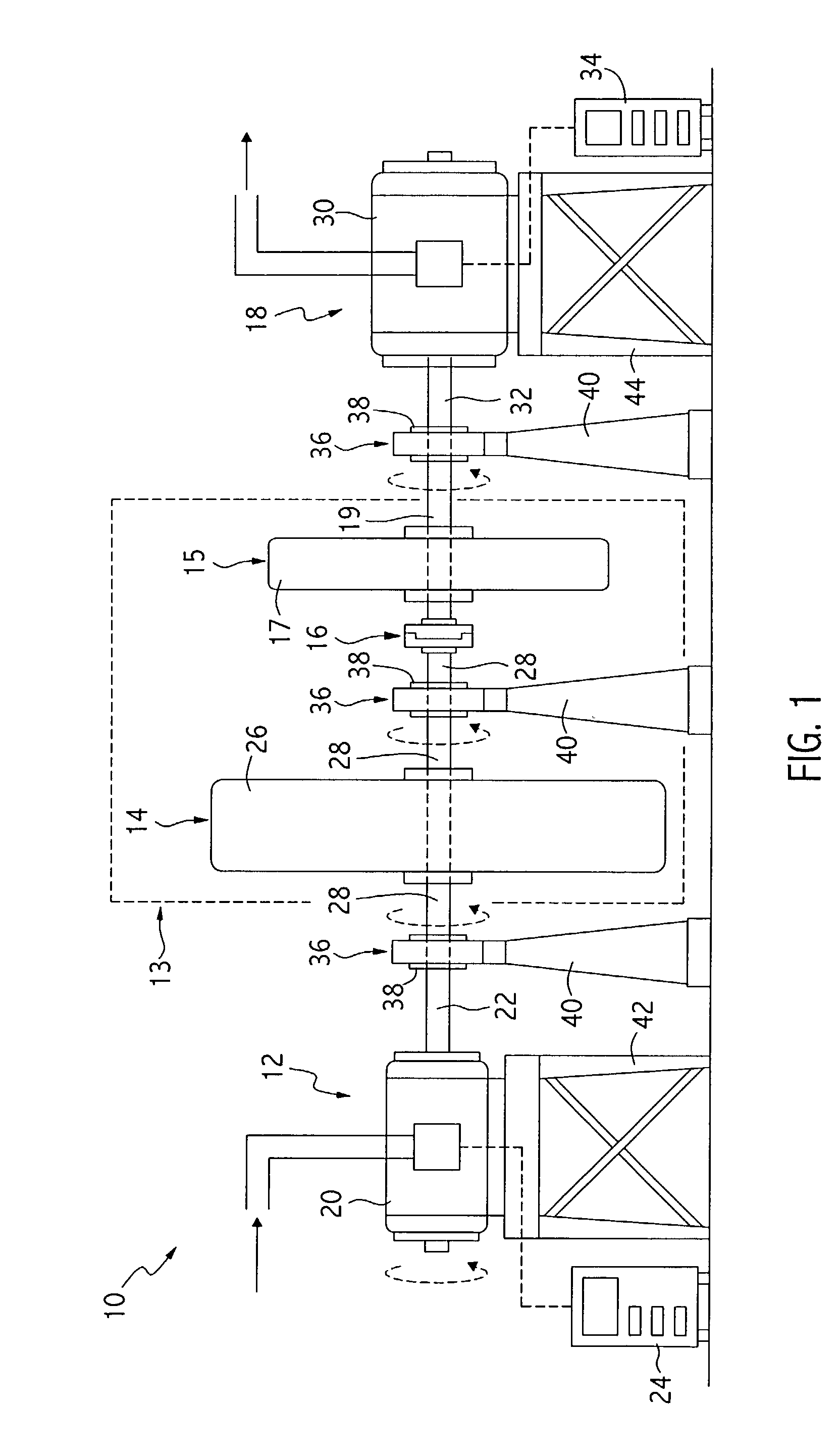System and method for generating power
a technology of electrical power generation and system, applied in the direction of electric generator control, emergency power supply arrangement, hybrid vehicles, etc., can solve the problems of increasing the overall increasing the cost of the system, and the system in the '704 patent will fail, so as to reduce the torque required by the motor, increase the speed of the flywheel assembly, and increase the amount of energy stored
- Summary
- Abstract
- Description
- Claims
- Application Information
AI Technical Summary
Benefits of technology
Problems solved by technology
Method used
Image
Examples
third embodiment
[0027]Referring to FIGS. 3 and 4, the present invention is shown. In this embodiment, the assisted—assisted, torque-enhance gearbox 13 further includes a speed increaser 54. The speed increaser 54 is connected between the motor 20 and the first flywheel assembly 46 and is used to increase the speed of the first flywheel assembly 46 to a speed that is greater than the speed of the motor 20. By increasing the speed of the first flywheel assembly 46, this embodiment increases the amount of energy stored by the first flywheel assembly 46. It is well known in the art that the energy capacity of a flywheel is proportional to the square of the rotational speed of the flywheel. Thus, an increase in the rotational speed of flywheel assembly 46 results in an increase in the energy capacity of the flywheel that is proportional to the square of the increase in speed. The amount of increase can be varied and is dependent upon the energy requirements of a given application.
[0028]The speed increas...
fourth embodiment
[0029]Referring to FIG. 5, the present invention is shown. This embodiment is similar to the embodiment shown in FIG. 3 except that inertia-assisted, torque-enhance gearbox 13 includes, in addition to the first, second, and third flywheel assemblies, 46, 48, and 49, fourth, fifth, and sixth flywheel assemblies, 58, 60, and 62, connected between the speed increaser 54 and speed decreaser 56 using multiple clutch assemblies 63. The fourth flywheel assembly 58 includes a fourth flywheel 64 and a fourth flywheel shaft 66, the fifth flywheel assembly 60 includes a fifth flywheel 68 and a fifth flywheel shaft 70, and the sixth flywheel assembly 62 includes a sixth flywheel 72 and a sixth flywheel shaft 74. The clutch assemblies 63 are similar to the clutch assembly 16 described previously in reference to FIG. 1 except that these assemblies engage and disengage at a much higher speed. For example, in one version of this embodiment, the clutch assemblies 63 engage at approximately 10,000 rp...
PUM
 Login to View More
Login to View More Abstract
Description
Claims
Application Information
 Login to View More
Login to View More - R&D
- Intellectual Property
- Life Sciences
- Materials
- Tech Scout
- Unparalleled Data Quality
- Higher Quality Content
- 60% Fewer Hallucinations
Browse by: Latest US Patents, China's latest patents, Technical Efficacy Thesaurus, Application Domain, Technology Topic, Popular Technical Reports.
© 2025 PatSnap. All rights reserved.Legal|Privacy policy|Modern Slavery Act Transparency Statement|Sitemap|About US| Contact US: help@patsnap.com



